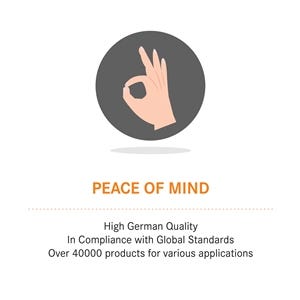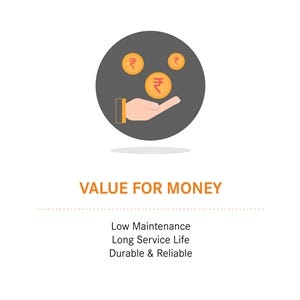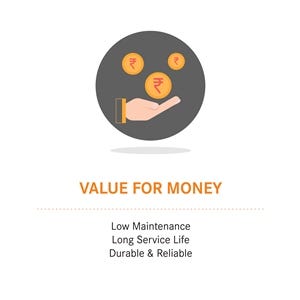Infrastructure
Infrastructure refers to the fundamental facilities and systems serving a country, city, or area, including the services and facilities necessary for its economy to function. It typically characterizes technical structures such as roads, bridges, tunnels, water supply sewers, electrical grids, telecommunications, and so forth, and can be defined as "the physical components of interrelated systems providing commodities and services essential to enable, sustain, or enhance societal living conditions".


LAPP, a leader in cable and connection technology has new products to offer for Infrastructure segments like
- Building/Offices
- Railways/Metro stations
- Roadway/Highway stations
- Ship Ports
- Airports
The link between infrastructure and economic development is not a once and for all affairs. It is a continuous process and progress in development has to be preceded, accompanied, and followed by progress in infrastructure, if we are to fulfill our declared objectives of generating a self-accelerating process of economic development.
- Easy
- Time save
- Safe
- Luxury lifestyle
- Economy growth
Importance of Infrastructure
- Infrastructure is important for the delivery of goods and services that promote prosperity and growth
- Contributes to the quality of life, health & safety of citizens, and the quality of their environments
- Extensive and efficient infrastructure is an essential driver of competitiveness
- Connects regions, integrates national market and provides links to markets in other countries
- Quality and extensiveness of infrastructure networks significantly impact economic growth
Building Automation System
Building automation is the automatic centralized control of a building's heating, ventilation and air conditioning, lighting, and other systems through a Building Management System or Building Automation System (BAS).
The objectives of building automation are
- Improved occupant comfort
- Efficient operation of building systems
- Reduction in energy consumption
- Operating costs
Building automation is an example of a distributed control system - the computer networking of electronic devices designed to monitor and control the mechanical, security, fire and flood safety, lighting (especially emergency lighting), HVAC and humidity control and ventilation systems in a building.
The term "Building Automation System", loosely used, refers to any electrical control system that is used to controls a building's heating, ventilation, and air conditioning (HVAC) system. Modern BAS can also control indoor and outdoor lighting as well as security, fire alarms, and basically everything else that is electrical in the building. Old HVAC control systems, such as wired thermostats or pneumatic controls, are a form of automation but lack the modern systems flexibility and integration
Currently, the infrastructure segment is experiencing a period of transition where both technologies as well as economy is changing constantly with this managing Safety, Hygiene and Health is in question.
In today’s connected society wires and cables have become an integral part of our homes, offices, public place, and industries and are extensively used in electrical and electronic equipment for power supply, control/signal, internal connections, and communication from one device to another. To reduce the damage and risk because damages can not be refilled.
Fire mishaps caused by the short circuits can be contributed to the usage of low-quality insulation material which is not flame retardant & halogen-free hence Fire safety plays a prominent role. So it is important for all of us from various sectors to understand the trends, study the markets, and find out solutions that address these issues.
- Halogen’s like Chlorine(ex: Polyvinyl Chloride(PVC)), Fluorine, Bromine, Iodine, etc., produces high-density toxic smoke and also emits corrosive acids.
- The toxic smoke emitted numbs the brain activity, causes irritation, impairs vision, and prevents a person from locating a safe exit thereby creating panic during emergency situations.
- Requirements for low smoke emissions, low generation of corrosive and toxic gases, and low fire propagation characteristics have produced a rapidly growing market for halogen-free flame retardant (HFFR) & fire survival (FS) cables.
FR, FR-LSH, HFFR, and Fire Survival solution
LAPP provides application solutions for these requirements. LAPP produces FR, FR-LSH, HFFR, and fire survival solution in single-core, multi-core cables, and data communication cables.
These are used in all locations where a high degree of protection against fire and fire damage has to be provided, including:
- Public buildings
- Residential buildings and commercial buildings
- All kinds of Infrastructure especially where safety is the main.
HFFR formulations are used in thermoplastic and cross-linked wire and cable applications, with the majority of compounds used in sheathing applications. Ethylene-vinyl acetate (EVA) is an essential polymer in HFFR compounds, with higher VA levels improving filler loading, flame retardancy, and flexibility. Exact plastomers are an ideal blend partner for EVA to improve compound viscosity and thermal properties, while Exelor polymer resins optimize the bonding between the polymer and the filler. This will also ensure greater safety and avoid fire situations. LAPP provides complete connectivity solutions and Plug & play.
Products for Infrastructure Industry
Power & Control Cables


Data Communication Cables
































